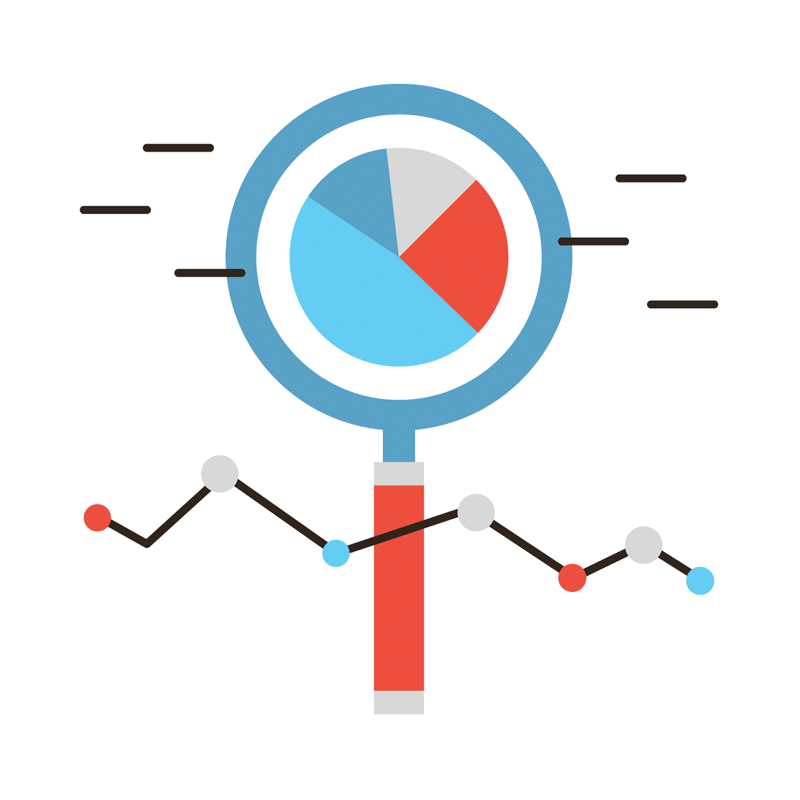
High bounce rate, source, medium, unique page views, returning visitors — “what does all of this mean?” — we hear you cry! Yet, these are some of the most important website metrics you should track to check the performance of your overall site and the progress of your digital marketing campaign.
In this post, we define each of the essential metrics your business should use to produce a digital report and how to collect and use this data. We will also outline some different metrics that are vital for the B2B sales funnel success.
What Are Website Metrics and How to Produce a Digital Report on Them?
Firstly, let’s define what a metric is.
Hot jar states that: “Metrics are expressed through numbers (number values, %, $, time) in a Google Analytics digital report: they are quantitative measurements of data and show how a website is performing in relation to a specific dimension.” Whereas the dimensions in GA are the attributes not expressed numerically, such as demographics and devices.
When it comes to website analytics tools, Google Analytics dominates. This free tool provides a robust amount of data that allows you to track useful metrics and dimensions. In addition, you can create customized dashboards so that you can report on the information that is most vital to you and your business’ website.
Essential Items to Include in a Digital Report to Measure a Websites Success
As a part of your digital marketing campaign, producing a digital report on website metrics is an essential role. It allows you to understand how well your website is (or isn’t) driving traffic, leads, and sales.
Here are the metrics that give you a deeper insight into how your website is functioning and illuminates any room for improvement, no matter what industry you are in.
Audiences
In Google Analytics, audiences are groups of website visitors with shared attributes. Such as gender, age, device type, country, or browsing behavior. These well-defined groups of visitors let you identify the most valuable users for your business, what pages you should optimize, and where to allocate your marketing budget accordingly.
- Devices: View visitor device types — mobile, desktop, tablet. You should ensure your pages are fully optimized, especially for the most-used device.
- Demographics: Track where your users are from, their age range, and gender to allocate your marketing budget towards the best-performing users.
Acquisition
Acquisition data provides information about how the user got to your site and who they are. It also records the users’ interactions with your site in one session. Tracking this can help you evaluate whether your marketing and SEO campaigns are working. Are they staying on your page and engaging with your content and products?
- Users: A unique visitor who initiated an individual session on your website within an allocated date range.
- New Users: These are the users who are visiting your page for the first time within your set date range.
- Returning Users: If a cookie is present, Google determines that this is a ‘returning’ user and starts a new session. If there is no cookie, Google defines the user as ‘new.’
- Sessions: GA records a session when the visitor enters your site. The session ends after 30 minutes of inactivity. GA records the users’ activity, and interactions take place in one session.
- Source/Medium: This highlights where your traffic comes from. The Source is the place the users were before seeing your content. For instance: a search engine or another website. The Medium is how your users arrived. The value “organic” signifies unpaid search traffic, and “none” means direct traffic (entering your page URL in the search bar).
Behavior
This segment in GA shows you how the users behaved while they were on your site.
What pages held their attention or made them click off? How long do they spend on each page or in one session? These data points highlight stages along the users’ journey and how long they are engaging with your website.
- Bounce Rate: The percentage of all single-page sessions where GA did not record any interactions. For example, if the visitor landed and left without clicking on any links and navigating to a second page, the bounce rate would be high (80-100%). The aim is to maintain a low bounce rate—lower than 60%.
- Pages per session: This is the average number of pages viewed during a session. Repeated views of a single page are counted.
- Average session duration: Simply, the average length of a session.
- Pageviews: In GA, these are the individual URLs that load when a user visits your site. This means that one session can result in several pageviews.
- Landing pages: Which pages are the users entering? Think about why they are landing on these pages to see what is performing and apply this to poorly-performing pages.
- Exit pages: Which pages are the users exiting your site? Optimize these accordingly. Eventually, a user does need to leave your site, so some more digging is required here as you won’t need to improve every exit page. Check the exit pages for any slow page speeds or broken code to see if they need maintenance.
Conversions
When you set up your Google Analytics reporting, you can create goals. These can be email sign-ups, a purchase, or adding a product to their cart. Defining these goals lets you track your users’ activity and actions they did or did not follow through with.
- Goal completions: A goal conversion (or goal completion) occurs when your visitors complete a specific action you are tracking.
- Goal conversion rate: This is calculated by the number of goal conversions divided by the number of sessions, times 100.
Key Metrics for B2B
B2C businesses have different objectives from B2B companies. For example, B2C aims to create content that informs, encourages engagement and social shares, and portrays the brands’ voice and personality. These goals can be measured using the metrics mentioned above in GA.
However, for some B2B organizations, these metrics are not enough to track the performance of their marketing strategies. For example, B2B marketers need analytics on individual users rather than defined groups. In addition, their leads tend to have a higher value, a longer sales cycle, and need nurturing with personalized marketing material.
Salespanel outline some of the most crucial questions that need to be answered for B2B:
- Where are my leads coming from?
- What are they doing on my website?
- Do they match my target customer profile?
- Which industry and company type do they belong to?
- How can I map an individual session to related data?
- Which leads should I prioritize?
- What campaigns are bringing the highest quality leads?
- Which campaigns are not generating good results?
- How can I use the data to influence the sales process?
Let’s take a look at some other metrics B2B should consider.
- Volume: This is the number of impressions, users, page visits, email opens, etc. B2B marketers need to break this down to an individual customer level to gain a deeper, more impactful insight.
- Conversions: The conversion path in B2B can include webinar or email sign-ups, booking a demo, downloading an Ebook, and finally, the purchase. The data from both the sales and marketing teams should be synced in order to accomplish closed-loop marketing.
- Velocity: It’s important to track how long the sales cycle lasts and monitor the speed of each conversion. Is there a way to shorten it to make the journey more efficient and improve the user experience?
How Can Content Marketing Help Your Business?
Many of our clients ask us how to measure the performance of their digital marketing campaigns. Of course, they want to know what is working well and contributing to their business’ success. At Content First Marketing, we developed the C1M App—a portal where you can see exactly what our team has done for your business and how the campaign is performing.
Let our team take care of your websites’ analytics and create a digital report of your website metrics tailored to your individual needs. We provide proven digital marketing strategies tailored to your business so you get real and measurable results, leads, and sales.
Schedule a free site and strategy review today, and discover what measurable results can mean for your business!


